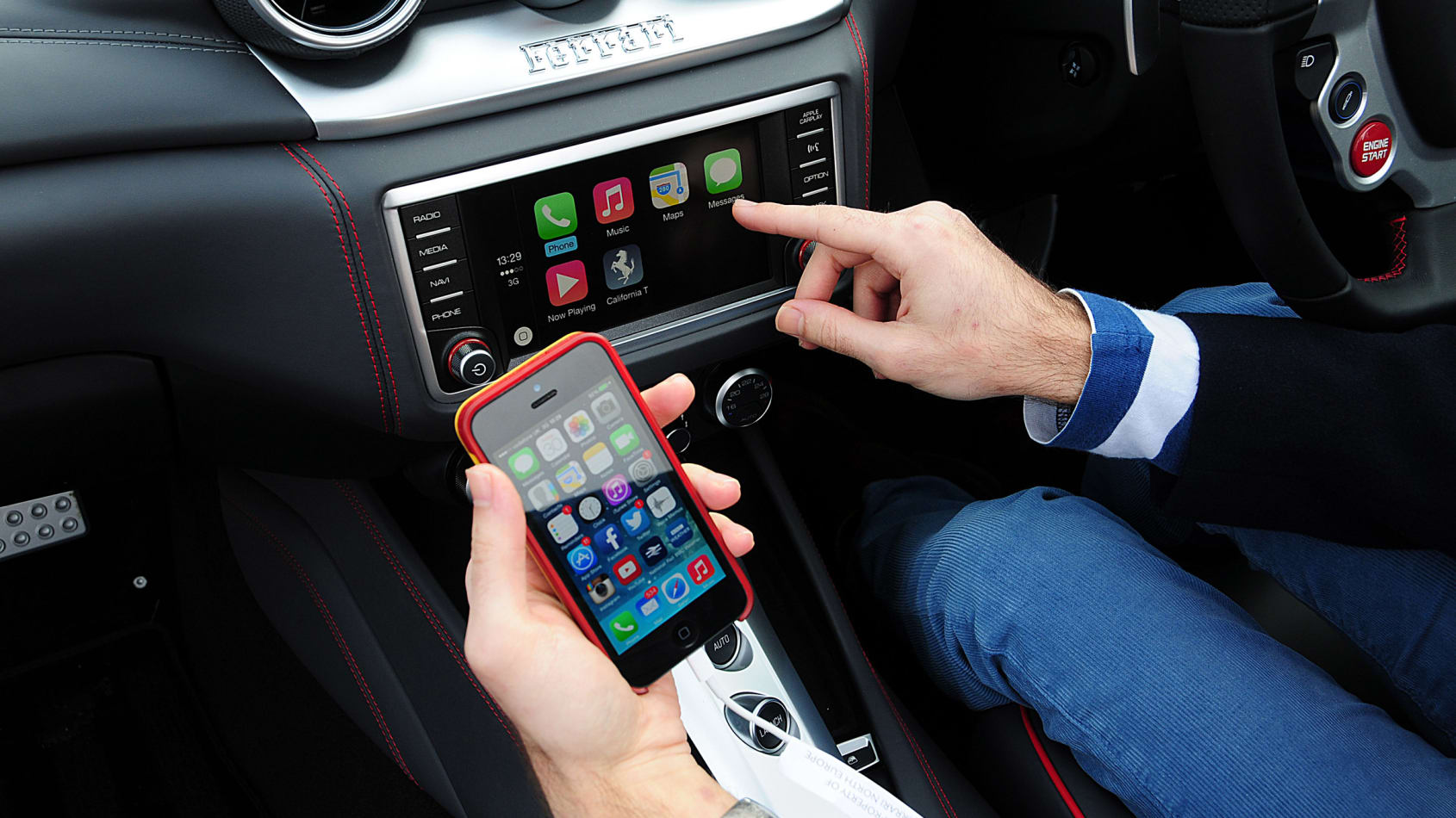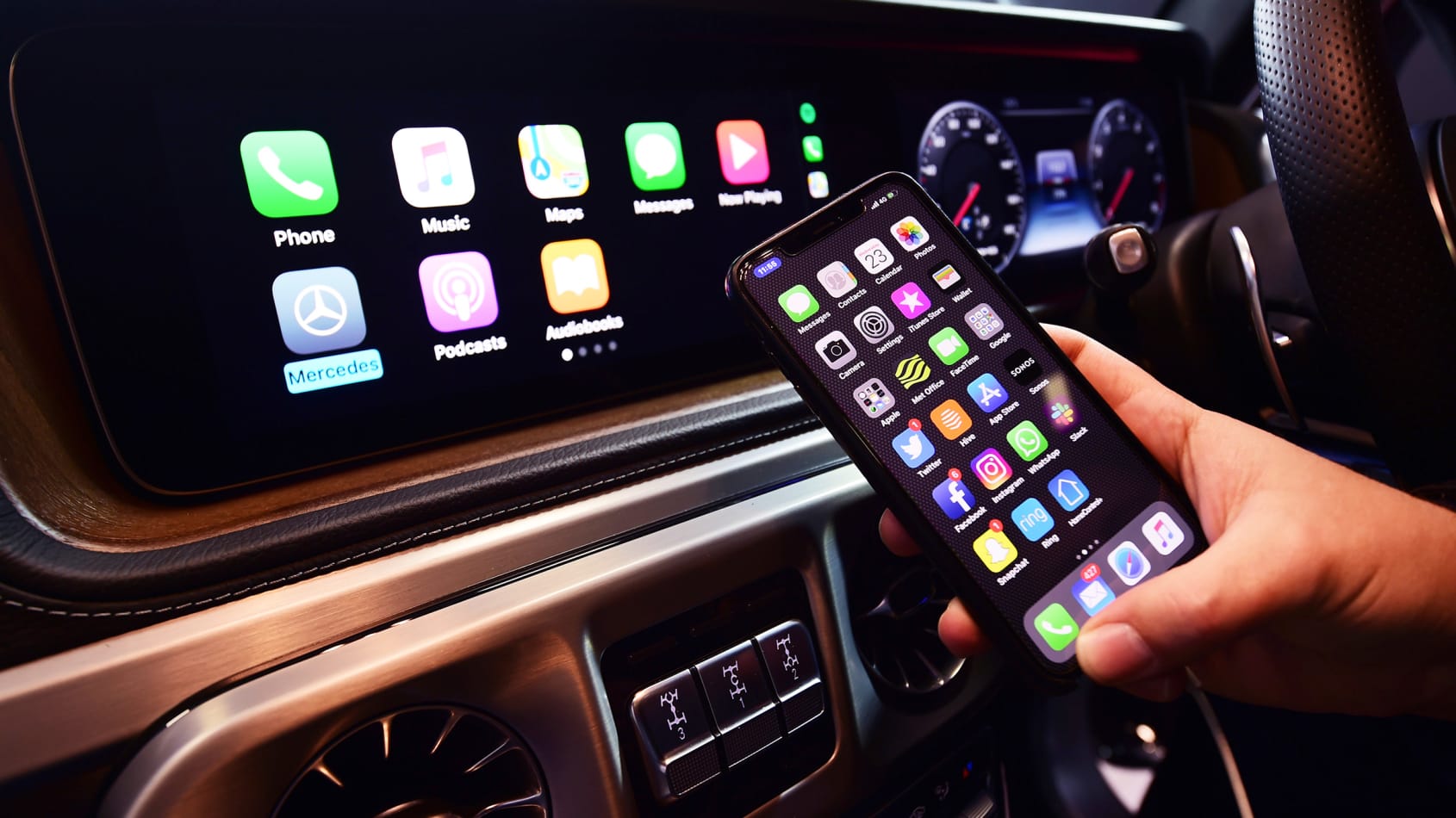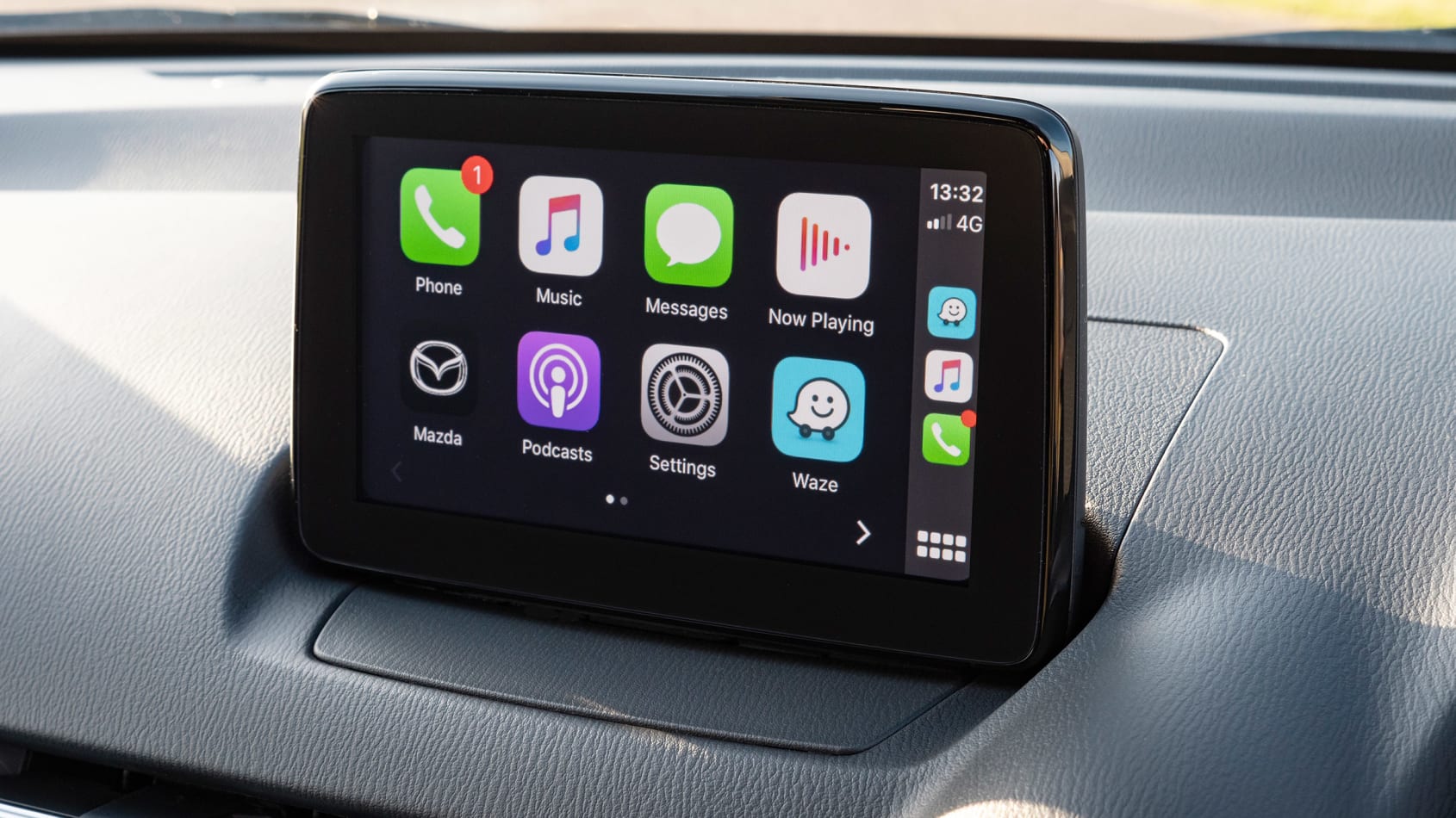 Apple CarPlay got a major boost in 2019, as the tech giant upgraded to iOS 13 and brought in significant new features for iPhone users
Apple CarPlay got a major boost in 2019, as the tech giant upgraded to iOS 13 and brought in significant new features for iPhone users
You may never have used CarPlay, but if you’ve been in the market for a new car – or just like to keep abreast of developments by reading your favourite car website – you’ll definitely have heard of it.
It’s Apple’s factory-developed operating system for the infotainment screens that have become central to motoring life these days. Increasingly installed in new cars by a wide range of manufacturers, with CarPlay Apple aims to give iPhone users the best possible features and performance when connecting their smartphones to their car for driving. It does this by ‘mirroring’ key iPhone apps and features on the car’s own dashboard display and allowing you to control those features using the car’s touchscreen, steering wheel controls, or voice recognition. On some models, wireless Apple CarPlay functionality is also now available so you can connect your phone to your car without a cable.
As well as making phone calls, messaging and looking up contacts, CarPlay means you can access your Apple Music playlists and other music providers like Spotify, or navigate via Apple’s mapping system or using third-party services like Waze. Interestingly, and perhaps predictably given the big touchscreens and fantastic graphic capability of screens now fitted to many cars, lots of users search for CarPlay games… there aren’t any, due to equally predictable safety concerns!
Android phone users can look away now, or better still check out our Android Auto review. It’s the rival system developed by Google that allows Android smartphone users to do much the same sort of things. Asking which is better in the great Carplay/Android debate is a bit like choosing between BMW or Mercedes. They’re both great, just a bit different, and whichever phone system you prefer will determine whether Carplay or Android Auto is best for you.
Today, the majority of car makers offer Apple CarPlay – as well as Android Auto for non-Apple smartphones – either as standard or as an option on their cars – some makers have even started to forego offering hard-wired sat-nav systems in favour of CarPlay installations.
The main benefit of this is that the apps used with CarPlay are constantly updated so that the latest features are included. This is especially true of Apple Maps, the firm’s mapping app. Rather than having map data loaded on the iPhone or iPad, the maps are online, just like Google Maps, and that means they’re accurate and up-to-date whenever you use them. In comparison, built-in nav systems can only really be updated come service time, and usually for a hefty fee.
The latest Apple CarPlay upgrade – what’s new?
The biggest and most obvious change to CarPlay in iOS 13 is a new dashboard screen that’s configurable with your favourite apps. While previously you had to flip between apps on different screens to operate them, you can now see an apps menu alongside a navigation window on the left side of the screen, while the right side gives you audio controls and Siri suggestions based on navigation choices or apps you typically use while driving. This improved access to core features allows you to focus more on the road and less on the screen.

CarPlay also works with Apple’s AI assistant Siri, but while Siri operations used to take over the whole CarPlay screen, the latest update allows Siri to work while other features are still displayed – for instance you needn’t lose sight of your navigation screen when ‘asking Siri’.
The Apple Music CarPlay screen has also been overhauled, with the intention of making it easier to find your playlists and new music recommendations, as well as providing more emphasis on album cover imagery.
The latest CarPlay calendar feature now allows you to see dates in your diary and scroll through entries on screen, and there’s a new Light Mode screen theme that makes the CarPlay interface look less moody, and work better in bright ambient light.
One other big advantage of the latest CarPlay upgrade is that it no longer freezes your phone when it’s hooked up to the car. You – or a passenger – can now scroll through iPhone features on the handset without interrupting the CarPlay interface and what’s displayed on the dashboard screen.
How to connect Apple CarPlay
Using CarPlay is pretty effortless and it connects your iPhone (or iPad/iPod)to your car in an instant – simply plug it into the USB socket (although some car makers are now starting to offer wireless CarPlay connections), follow the brief on-screen instructions asking you to unlock your phone to permit CarPlay to access it, and you’re ready to roll. And you only need to do this once – your iPhone will log the connection you’ve made to CarPlay on your car, so that the next time you connect, it will start working automatically.

When you connect CarPlay, the car’s infotainment screen shows a menu of CarPlay-compatible apps on your iPhone. This includes pre-installed iPhone apps such as the Phone, Music, Maps, Messaging, Audiobooks and Podcasts, while third-party apps such as WhatsApp and radio players can also be accessed via the touchscreen, a car’s multifunction steering wheel or via voice control.
This is far easier to do than trying to use your iPhone while driving, which of course is an offence that’s punishable by a fine and points on your licence, because it’s a major safety risk.
Apple Maps
One of the main highlights of CarPlay is its use of Apple Maps. Apple installs the Map app as standard on all iPhone and iPad devices, and as it’s fully CarPlay compatible, it means you can have sat-nav in your car for the fraction of the cost of factory-fitted nav systems. It displays turn-by-turn directions on your car’s infotainment screen, and offers the full range of location search and destination functions that a conventional nav system offers. In fact, some carmakers are already dropping the option of sat-nav on some CarPlay-equipped cars, and it’s likely that built-in sat-nav could become obsolete in a few years.
Apple Maps is able to suggest landmarks along a route, show predicted traffic levels and live traffic information when network coverage allows, and can also reroute you if necessary. The only downside to Apple Maps is that it relies on your iPhone’s network coverage and data allowance or a wi-fi connection to update the map data when you’re on the move. That means if you lose your signal for any length of time, you could be left with a dot on the screen representing you and your car, and a blank grid instead of a map of your surroundings.
You can get around this by planning your route while connected to the web before you set off. You can set your destination and Apple Maps will calculate the route and download the map data you need to your iPhone. However, if you miss a turning and go off the planned route, then you’re at the mercy of your network connection as to whether you get the additional map data downloaded to show the new route information.
Apple Siri
Not all cars come with voice control, but iPhones are fitted with the Siri voice assistant as standard, and this adds user-friendly touches when used with CarPlay. It works in conjunction with messaging apps and can read out text messages over the car’s speakers. What’s more, you can dictate messages to Siri to send to contacts. The effectiveness of this depends on how refined your car is, because background noise can hamper Siri’s ability to transcribe what you say.
The other downside to messaging is that Siri cannot handle abbreviations, emojis and picture messages. Often it will read everything literally and describe emojis, which can sound a bit odd. You can also use Siri to navigate through your Music library, by selecting playlists, podcast and radio apps.
Which cars come with Apple CarPlay?
As time progresses, more and more car makers are embracing CarPlay technology. The first car to use Apple CarPlay was the Ferrari FF, which was revealed at the 2014 Geneva Motor Show. Other makers soon followed suit, and today CarPlay is usually bundled together with Android Auto in a car’s infotainment package. It’s quickly becoming standard kit on new cars, although some manufacturers, such as BMW, still charge a pretty penny for it as an optional extra.
If you’re not in the market for a new car, then you can also buy aftermarket navigation/audio head units that are pre-loaded with CarPlay – reputable manufacturers such as Alpine, Sony, JVC, Pioneer and Kenwood all offer compatible head units.
Volkswagen offers a choice of three switchable smartphone interfaces. Its latest Discover Navigation system – a high-end option being introduced widely across its line-up as models are refreshed – offers Android Auto, Apple CarPlay and MirrorLink connectivity.
Apple CarPlay versus Android Auto review – which is better?
The basic features of the two rival systems are broadly similar, but dedicated iPhone users will prefer the simple and refined CarPlay interface, which mimics the look and feel of an iPhone.
Android Auto uses the live update card information system used by Google Now.
Music features naturally reflect the systems’ origins too – so CarPlay uses Music (formerly iTunes) but also connects to Dash Radio, Stitcher and Audible, while Android Auto leads with Google Play Music, but also enables Spotify and Radioplayer.
Both rival systems handle navigation and mapping effectively, but many users will be instantly more comfortable with Android Auto’s Google Maps system, as it’s so familiar from their desktops.
While CarPlay supports Apple’s own messaging system, and is now compatible with WhatsApp, Android Auto can handle messages from more apps, including Google Hangouts, KiK and Skype, to name a few.
Apple CarPlay versus Android Auto review – verdict
You’ll probably already own a smartphone when you buy your next car, and that will define your choice of in-car operating system.
In terms of functionality the two systems are very similar, but CarPlay focuses on simple, clean, intuitive user journeys while the Android Auto strength is a more open platform for third-party apps and content, although Apple is opening up CarPlay to be compatible with more third-party apps.
It’s a highly subjective area, but if forced to choose, we’d go for Android Auto with Google Maps and its access to multiple messaging apps.
Chris Rosamond




 Apple CarPlay got a major boost in 2019, as the tech giant upgraded to iOS 13 and brought in significant new features for iPhone users
Apple CarPlay got a major boost in 2019, as the tech giant upgraded to iOS 13 and brought in significant new features for iPhone users